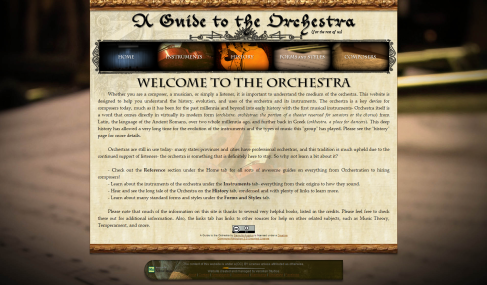There is a fascination, in the last few years, with primarily three features of orchestral sample libraries: If the number of multisamples/RR is in two digits, if it has sampled/”live legato, and how many mixable mic positions are available. Today, I’m going to talk a bit about the latter, “multiple mixable mic positions”, as well as using microphones effectively to create an effective experience for the end user of the samples, to the point where they really do have control over the tone of the instrument.
Tag Archives: music
IotW 5: Performing for Samples

I’m not always the one behind the mics, such as this (admittedly shaky) shot from last summer’s sampling bonanza.
If you’ve seen trailers for virtual instruments with real footage of the musicians performing, you probably see a 10-second or less clip of some cool note or just some silent close-ups while some dramatic music created using the plugin months after the original session.
In reality, sampling sessions are long, slow, borderline Zen marathons of endurance, especially when alone, as is often the case in such Guerrilla-style sampling sessions as those I often run. In which case, I either see something like the above or like the image below-
IotW 4: Consorts and Cousins: A Tale of Two Trombones

A “Bb” Tenor Trombone by C.G. Conn (Foreground) and a “G” Bass Trombone by Hawkes & Sons (Background) lounging.
The two instruments you see depicted are roughly contemporaries (the Bass Trombone is actually a little later, in the 1910’s, and English rather than American, but contemporaries they are just fine enough).
Guide to the Orchestra- Dev. Blog 3
So much is going on… First off, the website got a bit of redecorating, and I rebuilt the menu bar from scratch so it’s a lot cleaner and nicer looking (see image below).
The big thing I got figured out was the playback of audio on mouse-overs on the instrument pages. I ended up using Flash to do this- mouse over the little eighth notes before a word and you get to hear the audio streamed live in full quality!
Lastly, I plugged away and wrote a considerable amount of tutorials on game scoring and also sent off some e-mails to people for interviews.
Guide to the Orchestra- Dev. Blog 2
So I figure now is a good time to explain exactly WHAT this site is… A Guide to the Orchestra is exactly what it sounds like it is (for the most part). The site has several sections- Reference, Instruments, History, Forms & Styles, and Composers.
- Reference– Articles and tutorials for Composers, Game Developers, and “Beginners” that go through everything from selecting the right music to score your game to counterpoint to when to concert etiquette. Much of this section is planned to be supplemented by outside sources with tutorials from people who know more than me about subject matters (like industry-experienced developers and composers).
- Instruments– Every instrument in the standard orchestra has its own page that goes in depth on what the instrument is, how it sounds (with audio examples that will, if I can do it right, play on mouse-over), its history, general use in orchestration, and etymology (a little something inspired by Kevin Macleod). All this is researched carefully by me… so it’s REALLY slow work! (if you, o’ random person perusing the internet, are interested in helping, by all means! Comment or e-mail me (samulis@live.com).
- History– A general overview of each era (not going to kill myself on this part) and the evolution of the orchestra.
- Forms & Styles– Various mainstream forms and styles explained here, partially inspired by the forms section on Kevin Macleod’s site.
- Composers– Short (3-5 sentence) bios of major composers in chronological order. Links will probably lead to Wikipedia pages.
Yeah… and it’s mostly a one-man project at this point; also note that I have no formal training aside from two semesters of basic Music Theory and what I have learned from various books and the internet. Hence my openness to anyone interested in helping stepping in.
I’m aiming to have this done in a few weeks/months. I already have half the woodwinds section done, the harp page done (it’s about as large as the instrument is… well, maybe not THAT big, but it’s longer than flute and clarinet combined, I’d say), as well as several of the reference pages and so on completed.
New sub-website Under Construction
Howdy all! I’m working on a new sub-website for Versilstudios.net. This site will have TONS of information for everyone from composers to musicians to developers on everything from the instruments in the orchestra and their sounds to which filetypes and bitrates are best for what use. It’s mainly a solo project, but a lot of people are helping in little and big ways to move it along.
If you’re interested in helping, drop me a line (samulis@live.com) or add me on skype (lord-samulis)!
Product Brochure
Want to learn more about what Versilian Studios has to offer? check out our new product brochure!





